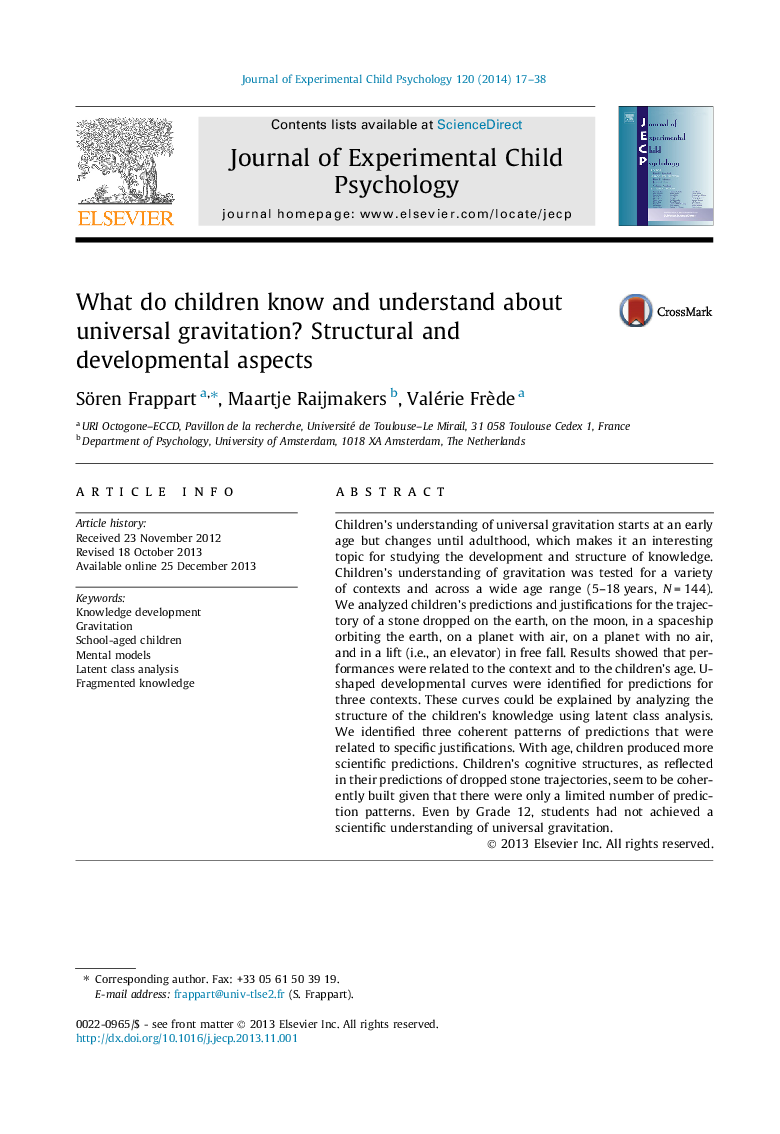| کد مقاله | کد نشریه | سال انتشار | مقاله انگلیسی | نسخه تمام متن |
|---|---|---|---|---|
| 918044 | 1473492 | 2014 | 22 صفحه PDF | دانلود رایگان |
• Children’s understanding of gravitation depends on context (Earth, Moon, etc.) and age (5–18 year olds).
• For all planets except for the Earth, children’s understanding of gravitation follows U-shaped developmental curves.
• Three coherent patterns of answers about gravitation are identified by latent class analysis.
• Children’s justifications (open questions) partially match their predictions (closed questions).
Children’s understanding of universal gravitation starts at an early age but changes until adulthood, which makes it an interesting topic for studying the development and structure of knowledge. Children’s understanding of gravitation was tested for a variety of contexts and across a wide age range (5–18 years, N = 144). We analyzed children’s predictions and justifications for the trajectory of a stone dropped on the earth, on the moon, in a spaceship orbiting the earth, on a planet with air, on a planet with no air, and in a lift (i.e., an elevator) in free fall. Results showed that performances were related to the context and to the children’s age. U-shaped developmental curves were identified for predictions for three contexts. These curves could be explained by analyzing the structure of the children’s knowledge using latent class analysis. We identified three coherent patterns of predictions that were related to specific justifications. With age, children produced more scientific predictions. Children’s cognitive structures, as reflected in their predictions of dropped stone trajectories, seem to be coherently built given that there were only a limited number of prediction patterns. Even by Grade 12, students had not achieved a scientific understanding of universal gravitation.
Journal: Journal of Experimental Child Psychology - Volume 120, April 2014, Pages 17–38
